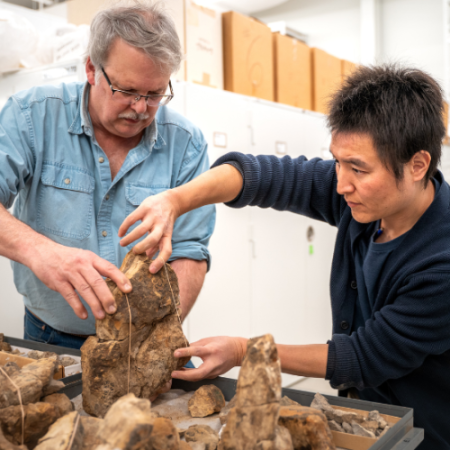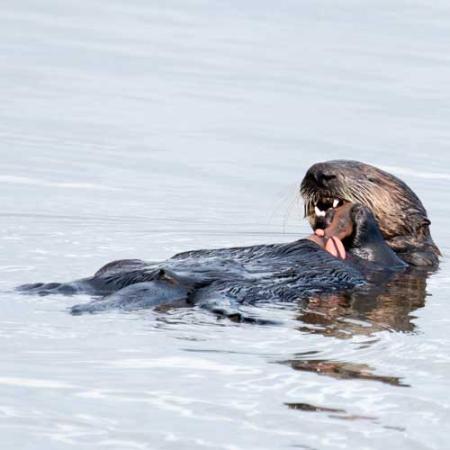This small beginning led to a major obsession for Laurel and she began using this method at other sites. To date she has whacked nearly 7,000 pine cones inside a heavy-duty net held against her leg, looking for the pine cone spider fauna that she, in a sense, discovered. Laurel (with a little help from me) collected 1,060 spiders from 4,600 eastern Washington pine cones between 2008 and 2013. I identified the spiders and added them to the Burke's collection.

Euryopis formosa spider on pine cone scale, June 4, 2011, Teanaway Campground, Kittitas County, Washington.

Laurel sorting a pine cone beat sample, May 18, 2011, Moloy Road on Wenas Creek, Yakima County, Washington.
As it turns out, no spider species were previously recorded as collected from pine cones. Discovering a new spider species is relatively common, but discovering a whole new spider habitat—that's really something! Some spiders evidently live in pine cones long-term, while others just use them to molt, lay eggs and rest when not out hunting. Or they wander in at random like that first one Laurel saw back at Swauk Prairie.
The spider we most commonly found in Washington pine cones was Euryopis formosa, a beautiful creature with a dark heart shape inside a bright silver patch on the abdomen. Sampling pine cones more than quadrupled the number of E. formosa specimens in the Burke spider collection—it was found at 47% of sampling sites!
This was the first study to describe the spider fauna of fallen pine cones and now there are 89 species recorded in our published paper, including two species never found in Washington state before. Spiders are everywhere—even in pine cones!
Learn more
To learn which spider species use fallen pine cones, read our study published in Western North American Naturalist (PDF). Interested in more about arachnids? Visit the Burke's Arachnology + Entomology Collections page or the Spider Myths website for myths, misconceptions, and superstitions about spiders.





